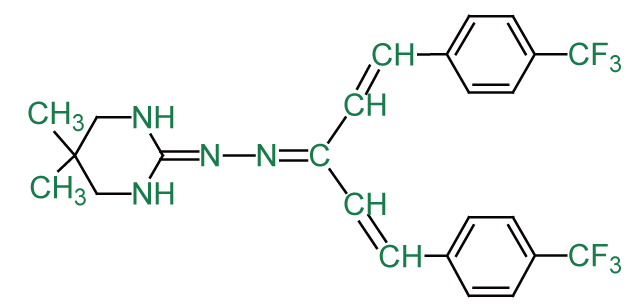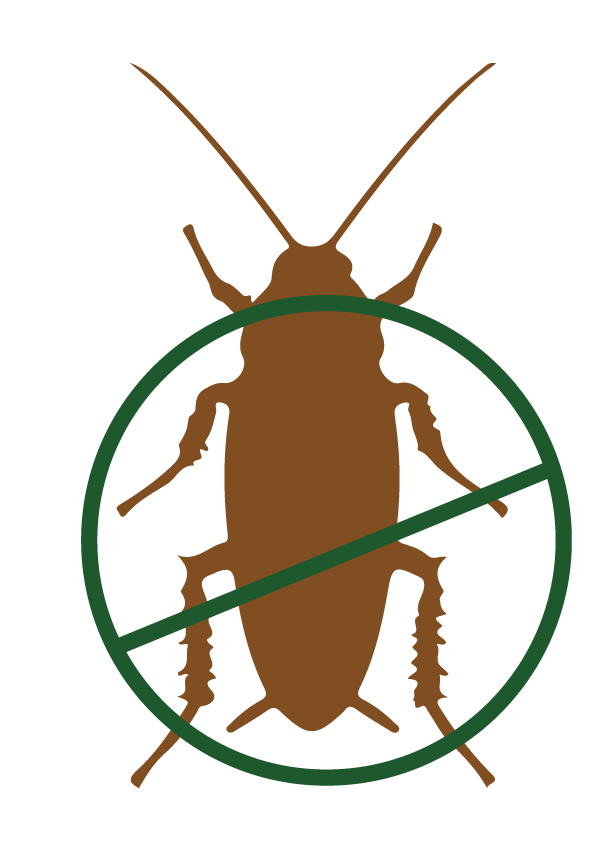- Abamectin
- Acetamiprid
- Alpha-cypermethrin
- Amitraz
- Azamethiphos
- Bifenthrin
- Bacillus thuringiensis
- Carbosulfan
- Chlorfenapyr
- Chlorfluazuron
- Chlorpyfifos
- Clothianidin
- Cypermethrin
- Cyphenothrin
- Clofentezine
- Cyromazine
- Deltamethrin
- Diafenthiuron
- Diazinon
- Diflubenzuron
- Emamectin Benzoate
- Empenthrin
- Fipronil
- Flufenoxuron
- Fenazaquin
- Hexythiazox
- Hydramethylnon
- Imidacloprid
- Indoxacarb
- Lambda-cyhalothrin
- Lufenuron
- Malathion
- Methomyl
- Nitenpyram
- Novaluron
- Permethrin
- Propargite
- Profenofos
- Pymetrozine
- Pyriproxyfen
- Sulfluramid
- Teflubenzuron
- Tetramethrin
- Thiamethoxam
- Thiodicarb
- Trichlorfon
- Triflumuron
Hydramethylnon

Other Name: tetrahydro-5,5-dimethyl-2(1H)-pyrimidinone [3-[4-(trifluoromethyl)phenyl]-1-[2-[4-(trifluoromethyl)phenyl]ethenyl]-2-propenylidene]hydrazone
CAS Number: [ 67485-29-4 ]
Molecular Formula: C25H24F6N4
Hydramethylnon is one among a group of pesticides known as trifluoromethyl aminohydrazones or metabolic inhibitors. While the active ingredient of insecticides attack the insect's central nervous system to cause nerve excitation, Hydramethylnon attack the insect's metabolic systems, resulting in decreased energy, lethargy, and the inability to perform basic life-sustaining functions such as feeding and grooming. Symptoms are delayed, however, with death typically occurs within 24 to 72 hours. This unique mode of action allows for affected carrier insects to return to their colony or harborage and spread the poison to others.
Hydramethylnon is commerically used for the control of:
- Ant Control. Ant bait or granulars containing hydramethylnon are sprayed or spread over the infested area. Ants soon retrieve the bait and return to their colony. The affected ant then serves as a poison carrier to other ants either by contact or through bait sharing. In this way, bait effectiveness is maximized.
- Cockroach Control. Roach bait or gel containing hydramethylnon is planted or applied in areas of highest travel (most often kitchens and bathrooms). Roaches ingest the bait or track through the gel to trigger hydramethylnon poisoning. Roaches then act as poison carriers by coming in contact with other roaches. Poison is also effectively spread throughout roach colonies when the affected roach dies and the other roaches feed on its carcass or feces.

Roach killer often contains commonly used insecticides like Imidacloprid, Chlopyrifos, Fipronil, while Hydramethylnon is classified as a General Use Pesticide (GUP), it is less hazardous to the environment and human health as long as you can follow the directions on the label is okay.
APPLICATIONS
Biochemistry
Site II electron transport inhibitor. Inhibits cellular respiration.
Mode of action
Non-systemic insecticide with stomach action.
Uses
Selective control of agricultural and household Formicidae (especially Camponotus, Iridomyrmex, Monomorium, Solenopsis and Pogonomyrmex spp. and Pheidole megacephala), Blattellidae (especially Blatta, Blattella, Periplaneta and Supella spp.), Kalotermitidae (especially Incisitermes) and Rhinotermitidae (especially Reticulitermes, Coptotermes, Heterotermes) using baits. Due to slow action, can be carried into nest by worker ants and kill the queen. Used at c. 16 g/ha per application.
Phytotoxicity
No phytotoxicity observed.
Formulation types PA; RB.
Our Technical Material (TC) of Permethrin have the specification as below:
| Items | Specification |
|---|---|
| Appearance | yellow- to brown viscous liquid |
| Content (Cis/Trans 25/75 ) | 95% min. |
| Water | 0.3% max. |
| Acidity (as HCl) | 0.3% max. |
| Acetone Insoluble Matter | 0.3% max. |
GHS complaint Safety Data Sheet (SDS) for commercial product of Hydramethylnon is available uopn requested.
